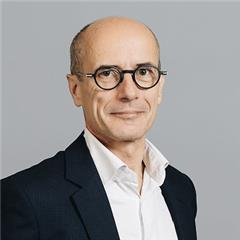SIAAP and SUEZ inaugurate the new biogas production unit at the Seine Aval wastewater treatment plant: a flagship project for the energy sovereignty
This new biogas production unit, the largest in France, is part of an ambitious program to modernize the Seine Aval facilities. It will enable the recovery of 130,000 tonnes of sludge produced annually from the wastewater treatment of 6 million people in Paris metropolitan area, into fertilizer and local, renewable energy. SIAAP is France's largest producer of biogas. This unit also provides a concrete response to the challenges of industrial safety, operational performance and environmental protection.”, says François-Marie Didier, Chairman of SIAAP.
The reconstruction of the largest biogas production unit from wastewater treatment in France
Located across 7 municipalities in the Yvelines department (Achères, Conflans-Sainte-Honorine, Maisons-Laffitte, Saint-Germain-en-Laye) and the Val d'Oise department (Cormeilles-en-Parisis, Herblay-sur-Seine, La Frette-sur-Seine), the Seine Aval plant treats the wastewater of 6 million people in Paris metropolitan area every day.
The complete reconstruction project of the site's biogas production unit, initiated in 2016, was carried out by a consortium led by SUEZ, in collaboration with its civil engineering partners Chantiers Modernes Construction, subsidiary of Vinci Construction, Demathieu Bard Construction, SOGEA Environnement - and Thetis Tanguy du Bouetiez Architecte. This initiative is part of a broader program to modernize and transform the site, undertaken by SIAAP since 2009.
With a sewage sludge treatment capacity of 130,000 tonnes per year, and a production capacity of 350 GWh/year, this biogas production unit is the largest of its kind in France. It covers 56% of the energy needs of the entire Seine Aval plant, while being self-sufficient for its own energy consumption. The new unit incorporates the highest standards for biogas plant technology to ensure continuous and safe operation. It features enhanced industrial safety, a compact design with centralized deodorization. It has also been engineered to adapt to sludge variability.
The total cost of the project amounts to €401 million (excluding VAT), including €373 million (excluding VAT) for the consortium. It has received subsidies amounting to €32 million from the Seine Normandy Water Agency amounting and €16 million in interest-free loans from the Seine Normandy Water Agency.
An industrial project built on SUEZ's long-standing expertise in sewage sludge recovery
The new biogas production unit is based on the Digelis® Fast solution developed by SUEZ. This thermophilic digestion solution minimizes both the footprint of the sewage sludge digesters, and the energy consumption required for their operation. The new unit includes 11 digesters, compared to 26 previously, while maintaining the same biogas production capacity. This compact process will eventually free up 70,000 m2 of the site. The solutions implemented (insulation, heat recovery exchangers, etc.) have also reduced energy consumption by 10% compared with the old process.
As an expert in the design and construction of large-scale water treatment infrastructures and the management of complex worksites, SUEZ has built over 85% of the sewage sludge anaerobic digestion capacity in France, and 1.5 million m3 of digesters worldwide.
A large-scale project in a demanding environment
Mobilizing 350 site workers simultaneously, the project accumulated a total of 2 million work-hours, including 46,000 hours dedicated to professional integration initiatives. In terms of facilities, 11 new digesters, each with a capacity of 12,000 m³, were built, and 34 km of pipes were installed.
The increased compactness of the biogas production process allowed for a 35% reduction of the concrete used for the facility, compared to conventional technologies. Furthermore, 45% of the concrete used was very low-carbon, and 5% low-carbon.
